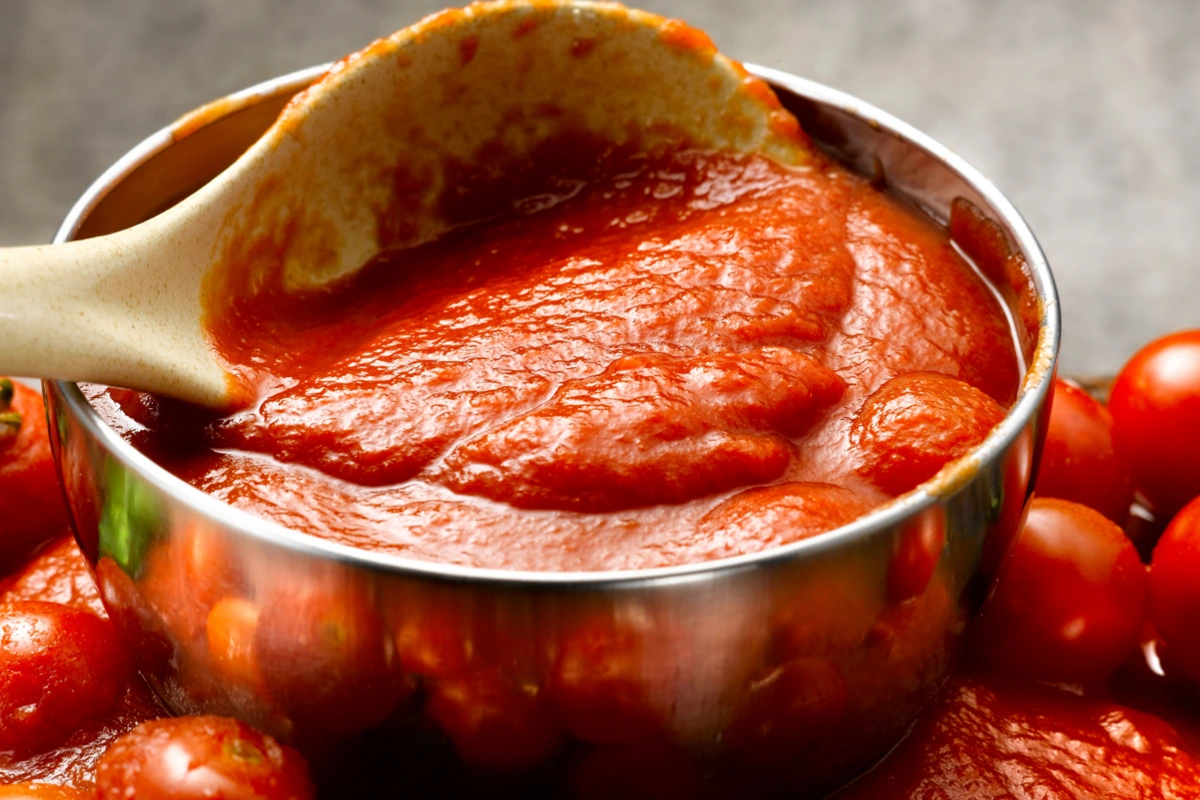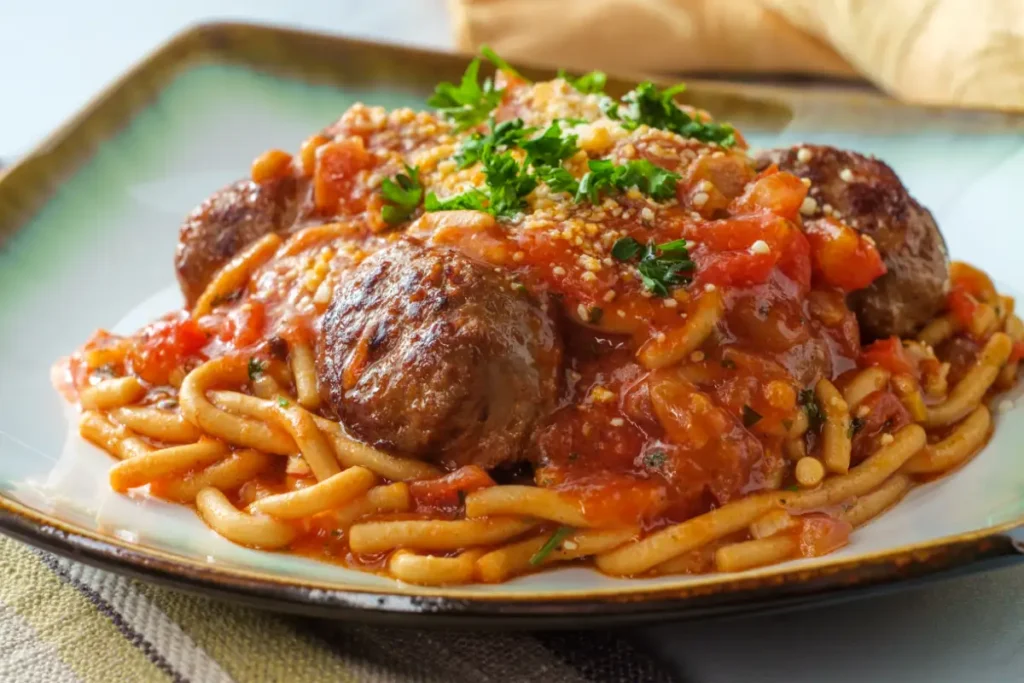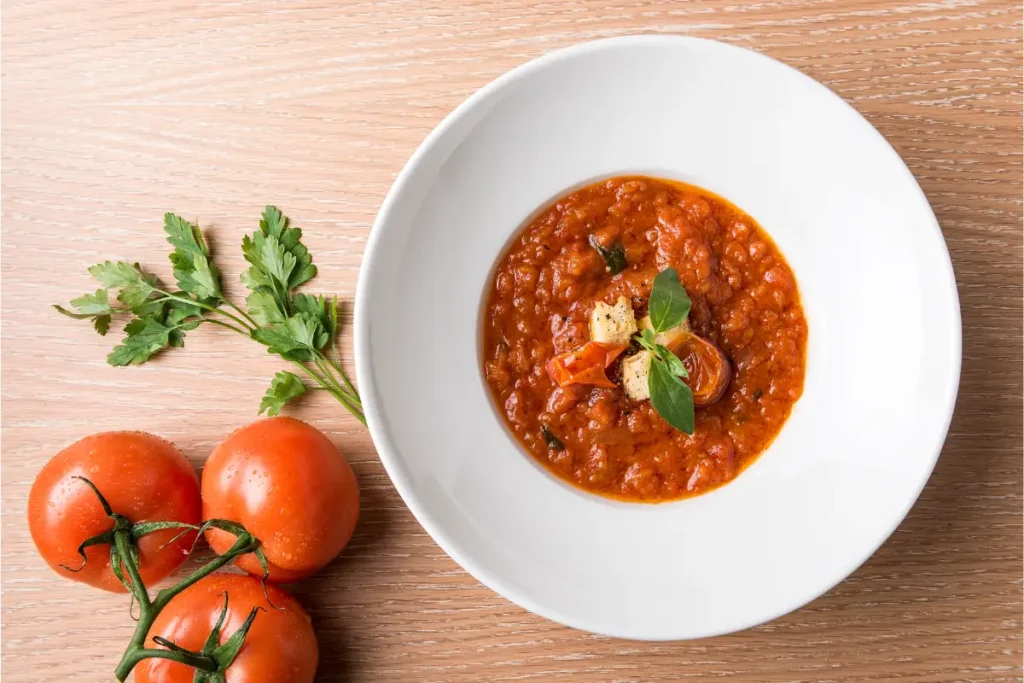In the realm of culinary delights, few dishes are as versatile, comforting, and universally cherished as tomato gravy. This savory sauce, steeped in rich traditions and bursting with flavors, not only elevates the simplest of meals but also carries with it tales of cultural heritage and family recipes passed down through generations. In this comprehensive article, we’re diving deep into the world of tomato gravy – from its humble beginnings to becoming a staple in kitchens around the globe. Whether you’re a seasoned chef or a curious foodie, you’re about to embark on a flavorful journey that promises to enrich your cooking repertoire and tantalize your taste buds.
Introduction to Tomato Gravy
Understanding Tomato Gravy
At its core, tomato gravy is more than just a sauce; it’s a culinary tradition that varies from one kitchen to another, each with its secret ingredients and preparation methods. Despite these variations, the essence of tomato gravy remains the same – a rich, tomato-based sauce that can transform ordinary dishes into extraordinary meals.
The cultural significance of tomato gravy cannot be overstated. From its origins in Italian cuisine to its adoption and adaptation by cultures around the world, this sauce has become a symbol of home-cooked comfort. Whether served over pasta, meat, or vegetables, tomato gravy brings a touch of warmth and nostalgia to the dining table.
A brief history of tomato gravy reveals its humble beginnings in the kitchens of Italian grandmothers, where tomatoes were simmered with love, herbs, and a handful of ingredients available at hand. This simple yet flavorful sauce quickly gained popularity, transcending borders and becoming a global phenomenon. Today, variations of tomato gravy can be found in numerous cuisines, each adding its unique twist to this beloved sauce.
As we delve into the world of tomato gravy, we’ll explore the secrets to crafting the perfect sauce, share tips for enhancing your meals with this versatile condiment, and answer some of the most common questions surrounding its preparation. Whether you’re looking to perfect your tomato gravy recipe or discover new ways to incorporate it into your culinary creations, this article promises to be your go-to guide. Let’s embark on this delicious journey together, shall we?
How to Make Tomato Gravy
Crafting the perfect tomato gravy is an art that begins with understanding the essentials. Here, we’ll guide you through the entire process, from selecting the right ingredients to the final touches that make your gravy stand out. Whether you’re aiming for a sauce that’s rich and thick for a hearty meal or light and aromatic for a simple dish, these steps will ensure your tomato gravy hits all the right notes.
Preparing the Base
Ingredients List
The beauty of tomato gravy lies in its simplicity. To start, you’ll need:
- Ripe tomatoes: The star of the show, providing the sauce’s body and flavor.
- Olive oil: For sautéing and adding a silky texture.
- Garlic and onions: The aromatic backbone that infuses the sauce with depth.
- Fresh herbs: Basil, oregano, and thyme bring freshness and complexity.
- Salt and pepper: Essential for seasoning and enhancing all the other flavors.
Remember, the quality of your tomatoes can make or break your gravy. Opt for fresh, ripe tomatoes for the best results.
Kitchen Tools Needed
- A large saucepan or pot
- A wooden spoon
- A blender or food mill (for a smoother sauce)
- A fine-mesh strainer (optional, to remove seeds and skin)
Step-by-Step Cooking Guide
Preparing the Tomatoes
Begin by scoring the bottoms of your tomatoes and blanching them in boiling water for a minute. This process makes peeling them a breeze. Once peeled, chop the tomatoes, keeping the juices to add to your sauce.
Cooking Process
- Heat olive oil in your saucepan over medium heat.
- Add finely chopped onions and garlic, sautéing until translucent and fragrant.
- Introduce the chopped tomatoes and their juices, stirring to combine.
- Lower the heat and let the mixture simmer gently. This slow cooking process allows the flavors to meld beautifully.
- As the sauce thickens, stir in the fresh herbs, and season with salt and pepper to taste.
Seasoning and Flavoring
Taste your tomato gravy as it simmers. Adjusting the seasoning gradually is key to developing a well-rounded flavor. If the sauce is too acidic, a pinch of sugar can balance it out. For a spicier kick, consider a dash of red pepper flakes.
In about 30 minutes, you’ll have a tomato gravy that’s robust and ready to elevate any dish. Remember, making tomato gravy is as much about the process as it is about the ingredients. Don’t rush it—good things take time, and your patience will be rewarded with a sauce that’s rich, flavorful, and deeply satisfying.
As we explore further, you’ll discover not just how to make this classic sauce but how to make it your own. Stay tuned for serving suggestions, nutritional insights, and expert tips that will make your tomato gravy the highlight of any meal.
Serving and Pairing Ideas
Once you’ve mastered the art of making tomato gravy, the next step is to explore the myriad ways to serve it. This versatile sauce complements a wide range of dishes, from the traditional to the innovative. Here, we’ll dive into classic pairings and inspire you with creative serving ideas to impress your guests or simply enjoy a delicious meal at home.
Enhancing Your Meals with Tomato Gravy
Traditional Pairings
Tomato gravy and pasta are a match made in heaven. Whether you prefer spaghetti, penne, or fusilli, topping your pasta with a generous ladle of rich tomato gravy transforms it into a comfort dish par excellence. For a protein boost, incorporate meatballs or simmer Italian sausages in the sauce until they’re juicy and flavorful.
Another classic pairing is tomato gravy served over a bed of creamy polenta. This combination is a staple in Italian households, offering a comforting and hearty meal that’s both simple and satisfying.
Creative Serving Ideas
For a twist on the traditional, why not use tomato gravy as a base for a shakshuka? This Middle Eastern dish features eggs poached directly in the sauce, creating a vibrant and flavorful breakfast or brunch option.
Tomato gravy can also be a star in vegetarian dishes. Try layering it in a lasagna with roasted vegetables and ricotta cheese for a hearty and nutritious meal that appeals to everyone, regardless of their dietary preferences. For a lighter option, use tomato gravy as a dip for grilled vegetables or a sauce for stuffed bell peppers.
Exploring the versatility of tomato gravy opens up a world of culinary possibilities. Whether you stick to the classics or experiment with new combinations, this sauce is sure to elevate your cooking and delight your taste buds.
As we continue our journey through the world of tomato gravy, we’ll delve into its nutritional benefits, debunk common myths, and share expert tips to ensure your gravy is not only delicious but also contributes to a balanced diet. Stay tuned for the next part of our series, where we’ll uncover the healthful aspects of this beloved sauce.
Nutritional Information
While savoring the rich and comforting taste of tomato gravy, it’s easy to overlook the nutritional benefits this sauce brings to the table. Tomatoes, the primary ingredient in tomato gravy, are a powerhouse of nutrients, making this sauce not only a delight for your taste buds but also a beneficial addition to a healthy diet.
Health Benefits of Tomato Gravy
Tomatoes are rich in vitamins C and K, potassium, and folate, as well as antioxidants like lycopene. Simmering tomatoes into tomato gravy concentrates these nutrients, including lycopene, associated with reduced risks of heart disease and cancer. This makes it a deliciously healthy choice.
The olive oil used in tomato gravy adds its own set of health benefits. Rich in monounsaturated fats, olive oil is associated with heart health and can help in lowering bad cholesterol levels. Moreover, cooking with olive oil, as opposed to butter or other fats, makes tomato gravy a healthier option for those looking to maintain a balanced diet.
Dietary Considerations
For individuals following specific dietary guidelines, tomato gravy can be easily adapted. Those on a low-sodium diet can limit or eliminate added salt, relying on herbs and garlic to flavor the sauce. Vegetarians and vegans can enjoy tomato gravy as it naturally contains no animal products, making it a perfect complement to plant-based meals.
Moreover, for those with gluten sensitivities, tomato gravy serves as a safe and flavorful alternative to gravies thickened with flour. It can be used to dress gluten-free pasta or as a base for gluten-free casseroles, ensuring that everyone, regardless of dietary restrictions, can enjoy the rich flavor of tomato gravy.
In understanding the nutritional information of tomato gravy, it becomes clear that this sauce is not only a versatile culinary component but also a contributor to a healthy and balanced diet. As we continue to explore the nuances of tomato gravy, remember that this beloved sauce can be both a source of comfort and nutrition, enriching your meals in more ways than one.
Common Mistakes and Tips
Mastering the art of making tomato gravy is a journey filled with trial and error. However, understanding common pitfalls and arming yourself with expert tips can transform this process from daunting to delightful. In this section, we’ll delve into the dos and don’ts of making tomato gravy, ensuring that your next batch is as perfect as can be.
Perfecting Your Tomato Gravy
Troubleshooting Common Issues
One of the most frequent issues encountered when making tomato gravy is ending up with a sauce that’s either too thin or too thick. If your gravy seems watery, allow it to simmer uncovered for a bit longer, letting the excess liquid evaporate. On the flip side, if the sauce is too thick, a splash of vegetable stock or water can help achieve the desired consistency without diluting the flavors.
Another common mistake is underseasoning. Tomato gravy relies heavily on the balance of flavors. Don’t be shy with herbs and garlic, and always season in layers. Start with a bit of salt and pepper early in the cooking process and adjust as needed after tasting near the end. Remember, it’s easier to add more seasoning than to correct an overly salted sauce.
Expert Tips for the Best Gravy
For a tomato gravy that truly stands out, consider these expert tips:
- Use Fresh Tomatoes in Season: While canned tomatoes can work in a pinch, nothing beats the flavor of fresh, ripe tomatoes. If available, choose heirloom varieties for an even richer taste.
- Incorporate a Variety of Herbs: While basil is a classic choice, don’t hesitate to experiment with oregano, thyme, or even a hint of rosemary. Each herb brings its unique flavor profile to the sauce.
- Slow and Low is the Way to Go: Simmering your tomato gravy on low heat for an extended period allows the flavors to develop fully. This slow cooking process is key to achieving a sauce that’s rich and layered.
FAQs
As we delve deeper into the world of tomato gravy, numerous questions arise, from storage tips to ingredient substitutions. In this section, we tackle some of the most frequently asked questions, providing you with the knowledge to make your tomato gravy experience as seamless and enjoyable as possible.
What is tomato gravy made of?
Tomato gravy is primarily made of ripe tomatoes that are cooked down into a sauce. Additionally, other common ingredients include olive oil, garlic, onions, fresh herbs like basil or oregano, and seasonings such as salt and pepper. Depending on the recipe, it may also contain a variety of other ingredients like sugar to balance acidity or vegetable stock for added depth of flavor.
What is another name for tomato gravy?
Another name for tomato gravy is “tomato sauce.” The terminology can vary based on regional preferences. In some areas, particularly in the southern United States, “tomato gravy” might refer to a thicker, more roux-based sauce incorporating tomatoes, while “tomato sauce” might imply a smoother, more liquid consistency.
Is tomato gravy the same as red-eye gravy?
No, tomato gravy differs from red-eye gravy. Tomato gravy primarily uses tomatoes as the base, often incorporating herbs and spices for flavor. In contrast, red-eye gravy is a Southern dish created by mixing the drippings of cooked ham with black coffee to produce a thin sauce. The two gravies possess distinct ingredients and flavors.
How do you store tomato gravy?
You can store tomato gravy in the refrigerator for up to 4 days. Ensure it cools to room temperature before transferring it to an airtight container. For longer storage, freeze tomato gravy. Pour it into freezer-safe bags or containers, leaving space for expansion, and freeze for up to 6 months. Thaw it overnight in the refrigerator and gently reheat it on the stove, stirring well, before serving.
Can tomato gravy be frozen?
Absolutely! Tomato gravy freezes beautifully, making it a fantastic make-ahead option. Pour cooled gravy into airtight containers or freezer bags, leaving some space for expansion. When you’re ready to enjoy, thaw overnight in the refrigerator and reheat gently on the stove, stirring frequently to maintain the smooth texture.
How can I thicken my tomato gravy?
If you find your tomato gravy too thin for your liking, there are a few ways to achieve a thicker consistency. One method is to simmer the sauce uncovered for longer, allowing excess water to evaporate. Alternatively, a small amount of tomato paste can be stirred in to thicken the sauce without altering its flavor significantly.
What are the best tomatoes for making gravy?
For the most flavorful tomato gravy, opt for ripe, in-season tomatoes. Roma and San Marzano tomatoes are particularly well-suited for sauces due to their rich flavor and lower water content. However, feel free to experiment with different varieties to discover what tastes best for you.
Vegan and gluten-free variations?
Tomato gravy is naturally vegan and gluten-free, making it a versatile sauce for various dietary preferences. Ensure all additional ingredients, such as stock or seasonings, comply with these dietary needs. Moreover, for a richer, creamier gravy, consider blending in cooked and pureed veggies like carrots or red bell peppers for a vegan twist that also enhances the sauce’s body and flavor.
Armed with these answers, you’re well on your way to mastering the art of tomato gravy. Whether you’re a seasoned cook or new to the kitchen, understanding these aspects of tomato gravy preparation ensures that your culinary endeavors are not only successful but also deliciously rewarding. Stay tuned as we wrap up our comprehensive guide with a conclusion that brings together everything we’ve learned about this beloved sauce.
Conclusion
As we bring our journey through the rich and flavorful world of tomato gravy to a close, it’s clear that this versatile sauce is more than just a culinary staple. It’s a bridge to cultural traditions, a canvas for creativity, and a pathway to healthier eating. From its humble beginnings to its place at the heart of countless dishes around the globe, tomato gravy has proven itself to be an indispensable part of the culinary world.
We’ve explored the essentials of crafting the perfect tomato gravy, from selecting the freshest tomatoes to mastering the slow simmer that coaxes out the sauce’s deep flavors. We’ve shared serving suggestions that span from traditional pairings to innovative culinary creations, and we’ve tackled the common concerns and questions that arise in the quest for the perfect gravy.
Now, it’s your turn to take these insights and tips into your kitchen. Experiment with different herbs, explore the use of fresh versus canned tomatoes and don’t be afraid to make the recipe your own. Remember, cooking is as much about the journey as it is about the destination.
We encourage you to share your tomato gravy adventures with friends and family. Host a dinner party centered around this beloved sauce, or share your favorite variations on social media. Cooking is a communal activity at its heart, and tomato gravy, with its rich flavors and comforting qualities, is the perfect dish to bring people together.
Thank you for joining us on this delicious exploration of tomato gravy. Whether you’re a seasoned chef or a culinary novice, we hope this guide has inspired you to embrace the art of sauce-making, explore new flavors, and celebrate the simple joy of cooking. Here’s to your next great culinary creation!
More Delicious Recipes:
- Truffle risotto: Elevate your dining experience with this luxurious dish, boasting earthy flavors and velvety textures that will leave you craving more.
Truffle Risotto: The Ultimate Guide to Mastering This Italian Classic
- Haupia pie: Dive into the tropical paradise of our Haupia Pie, a Hawaiian-inspired dessert bursting with coconut goodness and a buttery crust that will transport you to the sandy shores with every bite.
Haupia Pie: A Guide to Making Hawaii’s Beloved Coconut Dessert




3 thoughts on “Tomato Gravy: Mastering the Classic Sauce”